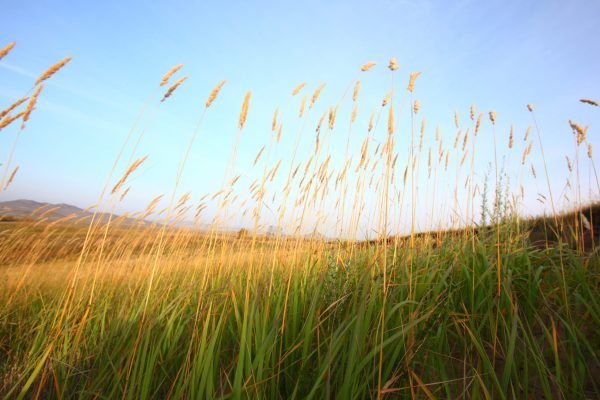Using Burning to Maximize Grasslands

Using Burning to Maximize Grasslands
If you are a fellow ‘90s kid, or raised kids in the late ‘80s and early ‘90s you probably remember the TV blaring out. “He’s on fire!” When you or your kids were playing the classic video game ‘NBA Jam.’ Hearing that phrase in the context of watching one of my two players on the screen drain a deep three pointer from a distance that even Caitlin Clark would approve of taught me that fire wasn’t always bad. In fact, fire was sometimes something really desirable. During that same era all of us youngsters were made well aware of the dangers of playing with matches. Smokey’s warnings against forest fires can’t be forgotten. Now 30 years later we are hearing a new message about fire: our ecosystems need it.
Fire and Adaptation
Since high school I have been a student of science. I remember proudly graduating high school having taken every science course my school offered. In college I earned two more science degrees, after which I taught science for 8 years professionally. After all of that scientific study, one of the most interesting principles I learned was how ecosystems are dependent upon different abiotic (nonliving) factors. At a surface level of understanding this seems obvious enough. For example: cool climates allow for plants that can metabolically function at low temperatures.
But I’m more interested in the real nitty gritty details. For example, lodgepole pines are a coniferous species found throughout the American West that can only release the seeds encased in their cones after they have been burned. They are dependent on the occasional wildfire in order for their species to propagate! The same is true for the native ecosystem here in the Midwest. The tallgrass prairies that once dominated our landscape were adapted to regular burning. Removing the old dead thatch from previous growing seasons, and to hold back the encroachment from deciduous forest. Subtracting fire from the western coniferous forests will cause lodgepole pines to slowly fade from their ecosystem, and not burning a remnant or reconstructed prairie will slowly diminish its health and give way to forest and invasive plants.
Why Burn
As I just mentioned, fire helps prairies by removing the smothering effects of many years’ worth of thatch. Build-up that collects close to the ground, and it also helps remove trees that encroach on the prairie to transform it into forest. Burning the thatch is important for multiple reasons. First, this improves the health of a stand of prairie by recycling the nutrients in the old dead plant material. Transforming them into new topsoil. By removing the thatch new plants have a chance to get the sunlight necessary for growing and filling in the prairie. Ground nesting birds like bobwhite quail and pheasants are able to access bare soil where they can easily find insects and seeds to eat, and evade predators by having clear running paths around the native bunch grasses.
Prairie burning also plays the critically important role of removing invasive plants that try to establish themselves in the prairie. Prairies that do not get managed with fire miss out on all of these important benefits. If given enough time, they will fade into unhealthy hodge podge mixtures of invasive cool season grasses and trees. With that in mind, a prescribed burn is not just as simple as picking a nice spring day, lighting a match and standing upwind of the smoke to watch the fire do its work.
When To Burn
From earliest green up in the Spring, to the last maple leaf turning red in the fall, plants provide the most obvious displays of nature showing off its seasonal differences. The same is true within a prairie. In fact, a USDA approved seeding plan for the most forb diverse CRP plantings has to have certain percentages of early, mid, and late blooming flower species to support pollinating species, and grasses and sedges can be roughly categorized in the same way. Because of differences in plant maturity timelines. Scheduling a burn should line up with promoting the desired species, and limiting, or even eliminating the undesirable species.
This should be thoroughly researched before ever lighting a match. Some general guidelines are as follows: To promote forb diversity fall burning is best. To fight back invasive cool season grasses a late spring burn is best. These invasive cool season grasses include smooth brome, Kentucky bluegrass, fescue, reed canary grass. Far too many land managers burn their warm season grasses in March and early April. Instead of limiting the encroachment of cool season invasive plants, they set the table for them to explode in number and quickly take over the prairie. Burning at the correct time is so critically important that if weekend weather forecasts don’t cooperate for a safe and thorough burn, take a day off of work to hit the window when the conditions are right.
How To Burn
In my experience I have found that most land managers fall into one of two categories. Those who love to do controlled burns, and those who are scared to death of them. Because of the exciting and destructive nature of fire, both thought processes are easy to understand. Fire is something to be respected. As a powerful tool and as something that can destroy property and endanger lives. Understanding that reality means that if you are not comfortable, or capable of safely executing a burn, you need to seek out professional assistance. There are many land managers who provide that service. But for those of us who are willing to tackle this management technique. There are some important strategies that should be practiced making sure fire is held in check.
The first thing to keep in mind is that fire is an exothermic chemical reaction. Oxygen reacts with cellulose in the tissue of the plants that uses a heat source to initiate (ignite) the reaction. If any of these reactants aren’t present then the reaction cannot take place. Understanding this concept isn’t just needed for starting a fire, it’s important for controlling, or stopping the fire as well. The best way to create a sufficient firestop line is by establishing a backburn along a boundary where you want the burn to stop advancing. This is done by using careful lighting and smothering/watering along a downwind boundary of the prairie to create a blackened edge that has no remaining fuel source left along the edge. This backburn will prevent any further advancement of the fire beyond where you want it to reach.
To add some extra insurance to your backburn. Start by soaking down the grass behind the backburn to help ensure the fire doesn’t expand into unwanted areas. Once a sufficient backburn is established the focus shifts to thoroughly burning as much of the prairie as possible. This is when the wind (never burn in high winds) can really help get the job done quickly. Begin igniting the remaining edges finishing off with the upwind boundary which will very rapidly rush through the remainder of unburned prairie.
Safety First
Prairie burning carries with it some serious risks. I know at least one person who needed hospitalization after catching themselves on fire during an uncontrolled, controlled burn. Another person caught multiple neighbors’ fields on fire, and still another who burned down a neighbor’s cabin.
I’ve also heard a tragic story about smoke from a controlled burn that drifted into a busy highway. The fire limited driving visibility so much that it led to a fatal car accident. I say all this not to scare people away from burning their prairies. Instead to stress the importance of making certain all precautions are taken to guarantee a safe burn. Look out for hazards like high winds, variable winds, powerline poles, hidden equipment like septic tank lids, parked vehicles, etc. Beyond watching for hazards, always have plenty of water on hand (backpack sprayers, 3-point water tanks on tractors, or sprayer tanks on ATVs, trash pumps in creeks with high-capacity hoses- you get the picture).
Having plenty of friends to help is also a great way to stay ahead of calamity, be sure to arm them with water, scoop shovels or fire flappers. Some folks insist on using leaf blowers but I have found them to be too volatile. They also become completely useless when the battery dies. I would never recommend carrying around something with a plastic gas tank into open flames. Always notify the local fire department or sheriff’s office of your intentions to burn so they are prepared for an immediate response if things get out of hand, and if you aren’t capable of safely burning, don’t press your luck. Call in the professionals.
Burning prairie is a critically important habitat management strategy. Prairies that aren’t burned every 3-4 years become unhealthy and give way to monocultures of invasive plant species, losing their plant diversity and wildlife that thrive on that diversity. In contrast, the prairies that receive a regular burning regimen, will benefit greatly displaying great species diversity, and providing a home for abundant populations of wildlife.
By Kent Boucher
April 2025
Here is the issue for the Iowa Sportsman April 2025
Here is another article more focused toward upland hunting
Also here are our other websites take a look, especially if you have any interest in cattle.


